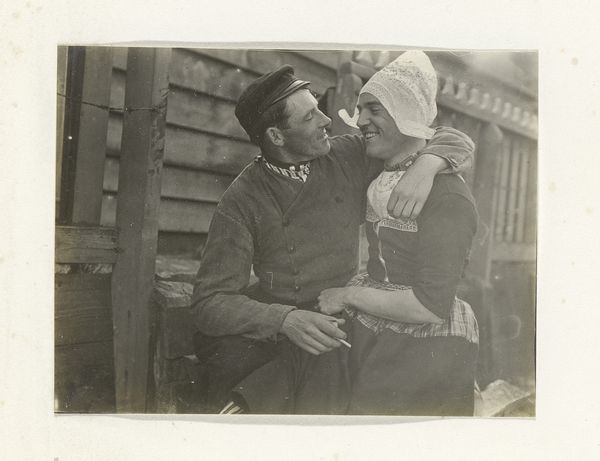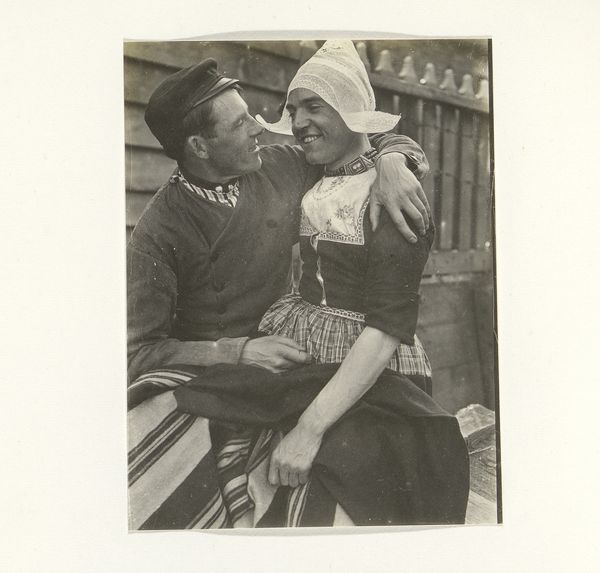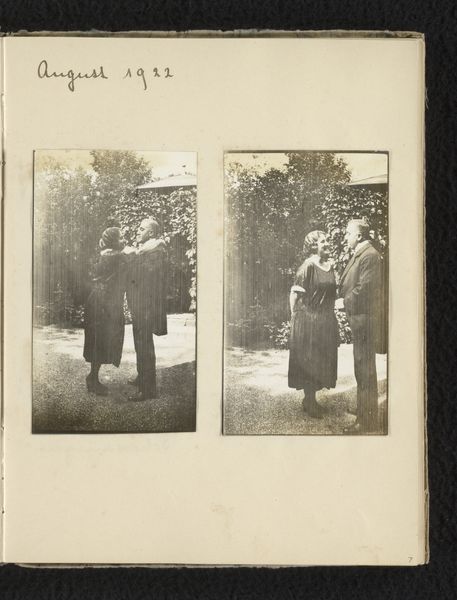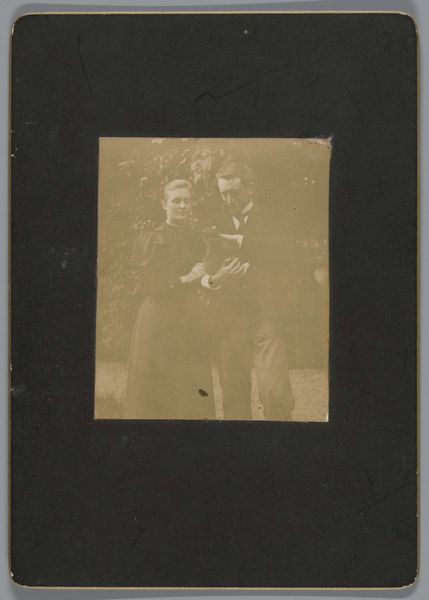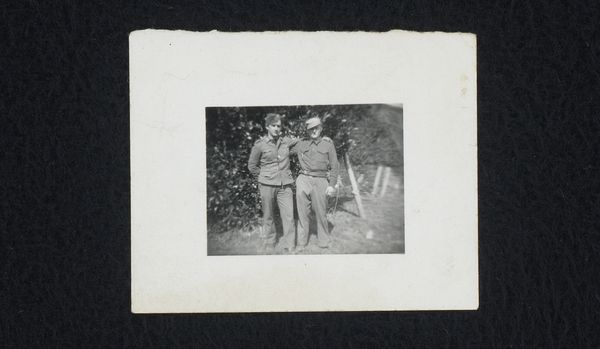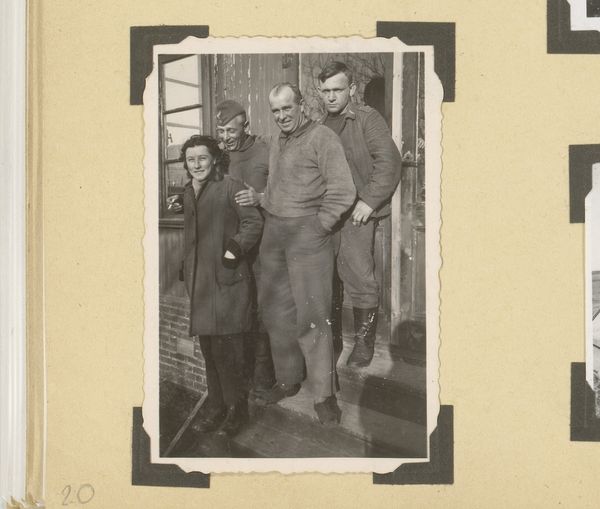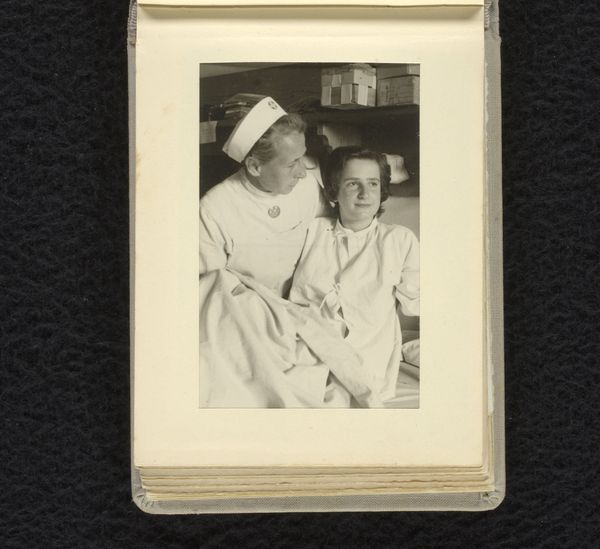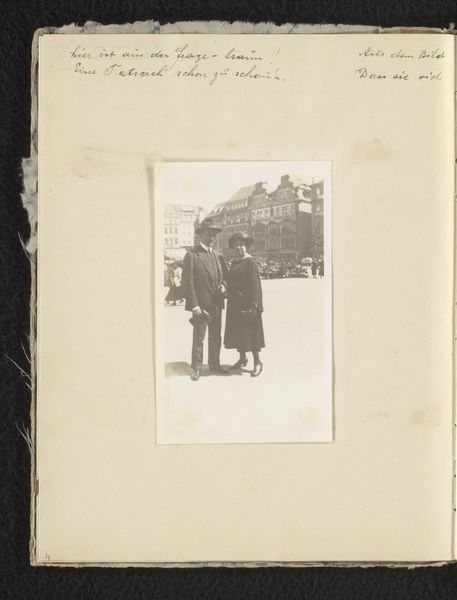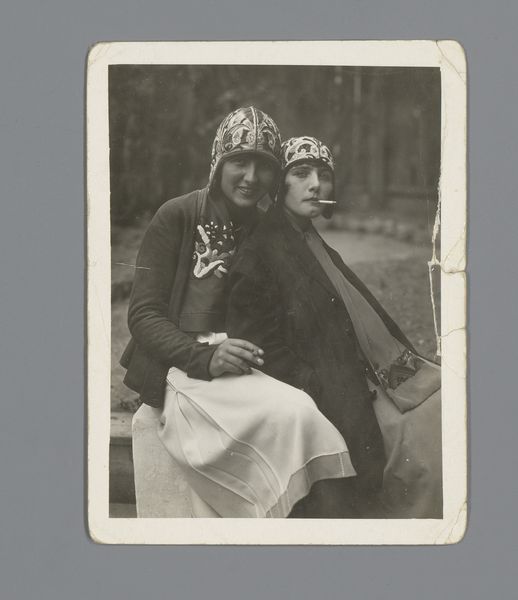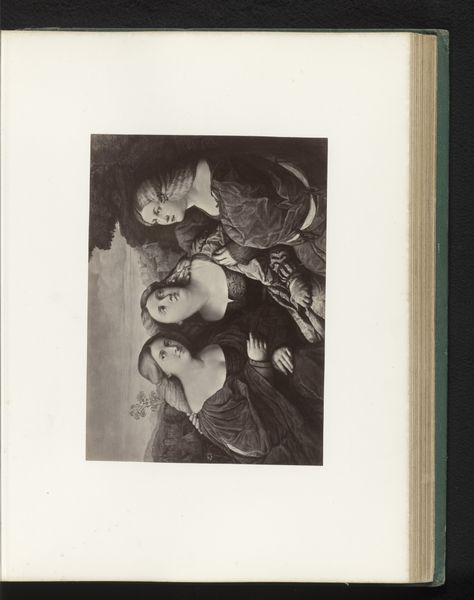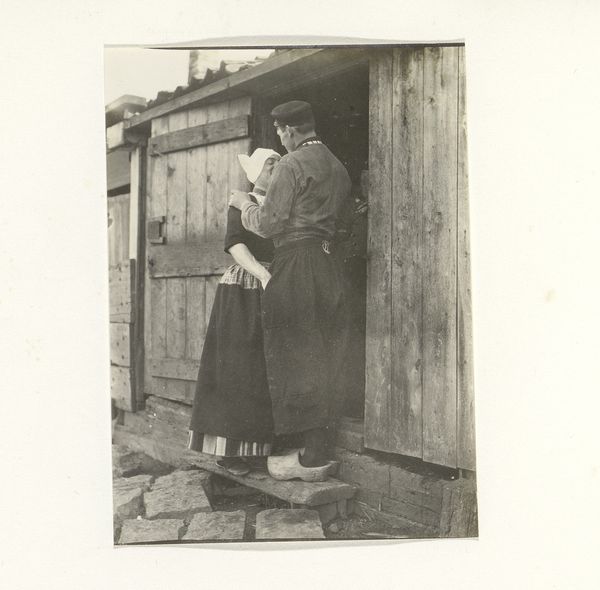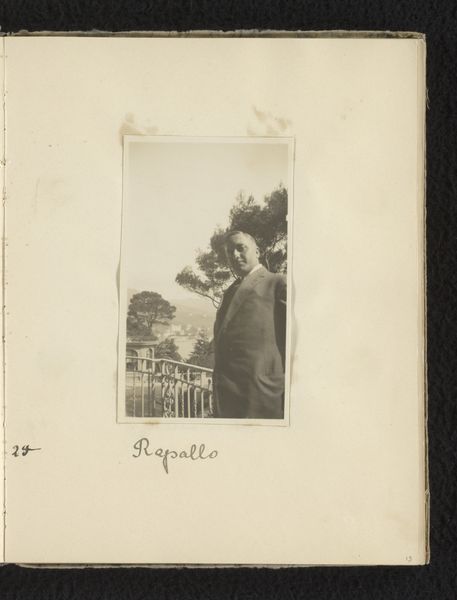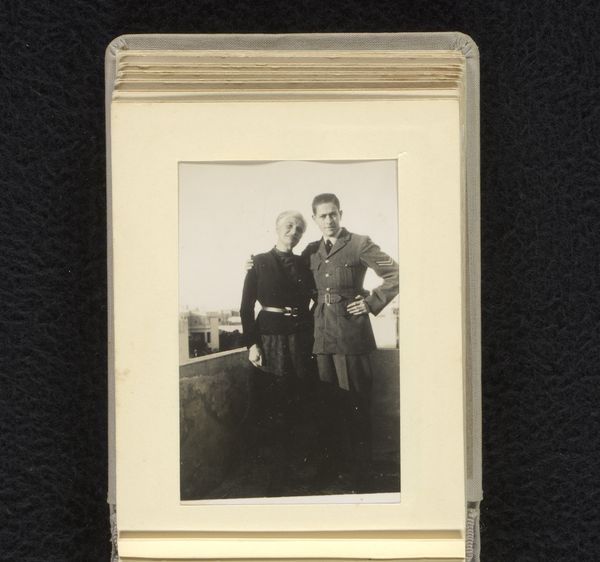
photography, gelatin-silver-print
#
photography
#
gelatin-silver-print
#
genre-painting
#
graphite
Dimensions: height 101 mm, width 75 mm
Copyright: Rijks Museum: Open Domain
Curator: The piece before us, entitled "Twee mannen in klederdracht, onder wie één in vrouwenkleding," which translates to "Two Men in Traditional Costume, One of Whom in Women's Clothing," a gelatin-silver-print photograph taken circa 1900-1910 by G. Hidderley. Editor: It’s striking. The grayscale rendering adds a historical depth that complements the genuine affection visible in their smiles. Notice the intimacy; it's unusual, captivating, almost transgressive for that period. Curator: It certainly raises questions of representation, doesn't it? The photographic genre was becoming more entrenched then. These images served purposes ranging from anthropological documentation to postcard souvenirs. Considering that, how might such a picture operate within its socio-historical milieu? Editor: Precisely. Context is critical. Is it staged subversion, performance, satire? The man dressed in women’s garb — it's certainly not presented as ridicule. Their intertwined arms seem to broadcast kinship and challenge prevailing norms, perhaps indicative of shifting social behaviors in the Dutch culture. What symbols emerge from this unconventional snapshot? Curator: Consider, too, the compositional elements. The sharp foreground focuses our gaze squarely on their shared embrace and jovial facial expressions. Meanwhile, the soft blur in the backdrop hints towards life occurring elsewhere. This juxtaposition draws viewers inward to meditate on relationships and identity amidst potentially turbulent social shifts. Editor: Absolutely, and given it’s a silver gelatin print, the texture must be wonderful. It invites close inspection, encouraging viewers to connect directly with what amounts to be intimate material culture. Do we find elements of humor interplaying with questions concerning societal pressures governing acceptable presentation among the period? Curator: Without deeper historical analysis, definite declarations would only remain speculative in character. Still, by interrogating this work alongside socio-political norms, it offers perspectives through which evolving modes of representation regarding masculinity during that formative time frame reveal insight. Editor: An excellent consideration, my friend. All in all, this singular visual document has spurred thoughtful dialogue involving intimate associations during a past generation—what powerful artwork. Curator: It invites a compelling dialogue between history, representation, and materiality indeed, showcasing how such ostensibly “simple” snapshots are far richer once placed into a structured formal and historical assessment.
Comments
No comments
Be the first to comment and join the conversation on the ultimate creative platform.
